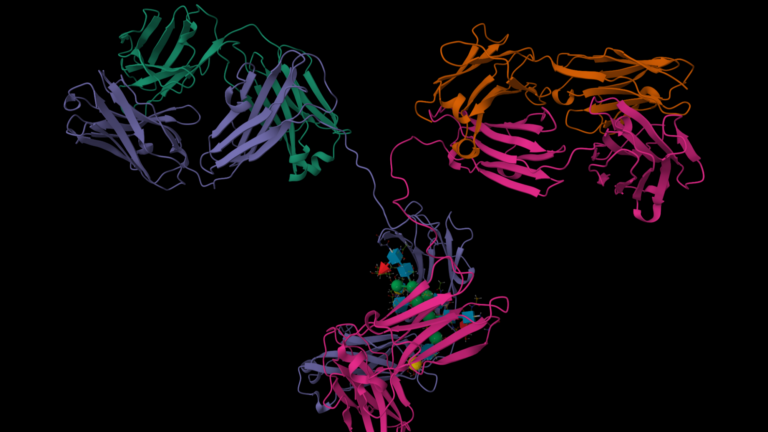GeForce NOW is wrapping a sleigh-full of gaming gifts this month, stuffing members’ cloud gaming stockings with new titles and fresh offers to keep holiday gaming spirits merry and bright. Adventure calls and whip-cracking action awaits in the highly anticipated Indiana Jones and the Great Circle, streaming in the cloud today during the Advanced Access
Read Article
NVIDIA NIM on AWS Supercharges AI Inference
Generative AI is rapidly transforming industries, driving demand for secure, high-performance inference solutions to scale increasingly complex models efficiently and cost-effectively. Expanding its collaboration with NVIDIA, Amazon Web Services (AWS) revealed today at its annual AWS re:Invent conference that it has extended NVIDIA NIM microservices across key AWS AI services to support faster AI inference
Read Article
 Christopher Bretherton, Senior Director of Climate Modeling at the Allen Institute for AI (AI2), highlights how AI is revolutionizing climate science. In this…
Christopher Bretherton, Senior Director of Climate Modeling at the Allen Institute for AI (AI2), highlights how AI is revolutionizing climate science. In this…
Christopher Bretherton, Senior Director of Climate Modeling at the Allen Institute for AI (AI2), highlights how AI is revolutionizing climate science. In this NVIDIA GTC 2024 session, Bretherton presents advancements in machine learning-based emulators for predicting regional climate changes and precipitation extremes. These tools accelerate climate modeling, making it faster, more efficient…
Field AI is building robot brains that enable robots to autonomously manage a wide range of industrial processes. Vention creates pretrained skills to ease development of robotic tasks. And Cobot offers Proxie, an AI-powered cobot designed to handle material movement and adapt to dynamic environments, working seamlessly alongside humans. These leading robotics startups are all
Read Article
Expanding what’s possible for developers and enterprises in the cloud, NVIDIA and Amazon Web Services are converging at AWS re:Invent in Las Vegas this week to showcase new solutions designed to accelerate AI and robotics breakthroughs and simplify research in quantum computing development. AWS re:Invent is a conference for the global cloud-computing community packed with
Read Article
 In the past decade, quantum computers have progressed significantly and could one day be used to undermine current cybersecurity practices. If run on a quantum…
In the past decade, quantum computers have progressed significantly and could one day be used to undermine current cybersecurity practices. If run on a quantum…
In the past decade, quantum computers have progressed significantly and could one day be used to undermine current cybersecurity practices. If run on a quantum computer, for example, an algorithm discovered by the theoretical computer scientist Peter Shor could crack common encryption schemes, including the Rivest-Shamir-Adleman (RSA) encryption algorithm. Post-quantum cryptography (PQC) is…
 Antibodies have become the most prevalent class of therapeutics, primarily due to their ability to target specific antigens, enabling them to treat a wide range…
Antibodies have become the most prevalent class of therapeutics, primarily due to their ability to target specific antigens, enabling them to treat a wide range…
Antibodies have become the most prevalent class of therapeutics, primarily due to their ability to target specific antigens, enabling them to treat a wide range of diseases, from cancer to autoimmune disorders. Their specificity reduces the likelihood of off-target effects, making them safer and often more effective than small-molecule drugs for complex conditions. As a result…
 Building a question-answering chatbot with large language models (LLMs) is now a common workflow for text-based interactions. What about creating an AI system…
Building a question-answering chatbot with large language models (LLMs) is now a common workflow for text-based interactions. What about creating an AI system…
Building a question-answering chatbot with large language models (LLMs) is now a common workflow for text-based interactions. What about creating an AI system that can answer questions about video and image content? This presents a far more complex task. Traditional video analytics tools struggle due to their limited functionality and a narrow focus on predefined objects.
 The evolution of modern application development has led to a significant shift toward microservice-based architectures. This approach offers great flexibility…
The evolution of modern application development has led to a significant shift toward microservice-based architectures. This approach offers great flexibility…
The evolution of modern application development has led to a significant shift toward microservice-based architectures. This approach offers great flexibility and scalability, but it also introduces new complexities, particularly in the realm of security. In the past, engineering teams were responsible for a handful of security aspects in their monolithic applications. Now, with microservices…
